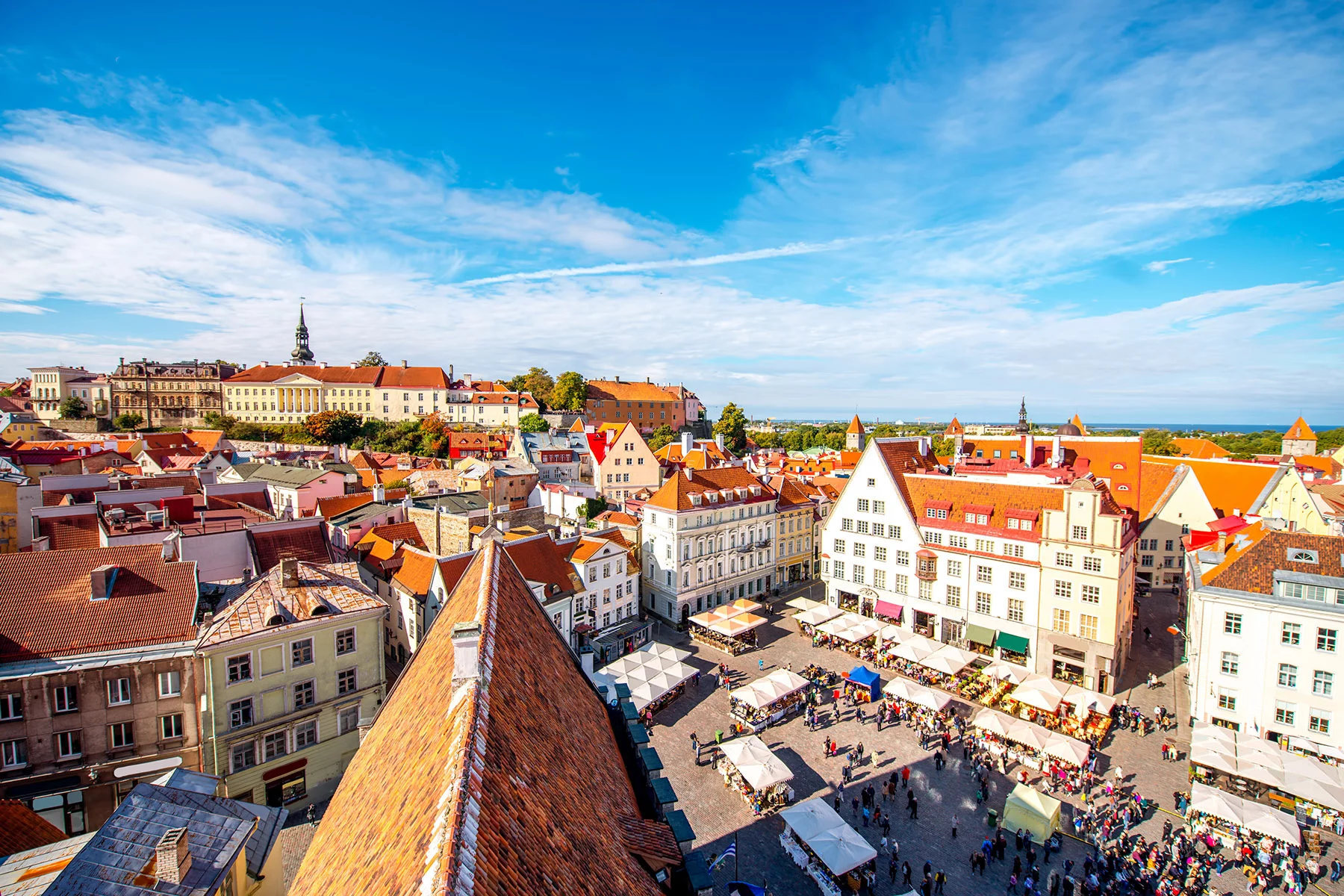We spend an ever-increasing amount of our lives online. From chatting with family and friends to shopping at the grocery store, almost everything is available digitally these days. But have you ever considered getting digital residency?
No, we’re not talking about the latest smash-hit videogame, we’re talking about Estonia’s game-changing decision to introduce an e-Residency program. Yes, you read that right. In 2014, the small Baltic nation started accepting applications for the world’s first digital residency.
But what is e-Residency and what could it mean for you and your business? To help you understand the latest innovation in global citizenship, here’s our guide to everything you need to know about Estonia’s e-Residency program.
- What is e-Residency?
- How does e-Residency work?
- Why did Estonia introduce e-Residency?
- What are the benefits of e-Residency?
- How do you apply for e-Residency in Estonia?
- How much does e-Residency cost?
- Can I live in Estonia with e-Residency?
- Does Estonia have any famous e-Residents?
- Are other countries introducing e-Residency?
Wise
Does your business go beyond borders? Then you need a fast and secure way to move money internationally. Wise is a global leader in online international money transfers, letting you move money at an exchange rate up to 8x cheaper than your bank. Whatever your personal or business needs, Wise can make your money go further.
What is e-Residency?
Essentially, Estonia’s e-Residency program enables online business owners, digital entrepreneurs, and freelancers from around the world to set up business in Estonia remotely. The government-backed scheme gives these entrepreneurs a digital Estonian ID and access to the country’s growing digital business community.
How does e-Residency work?
When you become an e-Resident, the Estonian government will issue you with an ID card that has a chip embedded into it. This chip will let you access Estonian public and private sector services online. You will also be able to sign documents digitally, apply for online business banking, and encrypt and send documents securely.

Once you have everything set up, you’ll be able to operate your company as if you were based in Estonia. Furthermore, you will have access to Estonia’s cutting-edge digital business community as well as the EU’s single market.
Why did Estonia introduce e-Residency?
Despite its small size, Estonia is one of the most digitally advanced nations in the world. Following the break-up of the former Soviet Union, Estonia made the most of the ensuing economic and political turmoil by fully embracing emerging technology. And it’s paid off in a big way.
These days, residents in the tech-savvy nation live an increasing amount of their lives online. Approximately 99% of public services can be accessed digitally, and one-third of the population even vote online. The introduction of e-Residency is simply another string in Estonia’s digital bow. It brings more investment into the country, putting Estonia firmly on the digital world map.
What are the benefits of e-Residency?
That largely depends on your personal circumstances. If you’re a freelancer, digital entrepreneur or online business owner, e-Residency can open a lot of doors for you. This is particularly true if you are a non-EU citizen and looking for access to the EU’s single market.
However, e-Residency in Estonia is still a worthwhile option even if you are an EU citizen. The digital advances of Estonia’s business community make many business necessities much easier to complete online. This means you can freely move around the world without impacting on your business operations.

Furthermore, Estonia’s e-Residency could be a popular option if you are a UK-based freelancer or online business owner. Following Brexit, you may not have the same access to the EU’s single market. E-Residency in Estonia could help ensure your business continues to operate normally.
How do you apply for e-Residency in Estonia?
The application process is fairly straightforward and can be done online. You’ll need to supply an application form, digital copies of your existing government-issued ID, and a photo. You will also need to submit a motivation statement. This should explain why you are applying for e-Residency, and include details of your past business dealings and your future plans.
It is also important to check whether you are eligible for e-Residency. Firstly, you must have a reasonable interest in Estonia’s e-services. You must also not be an Estonian resident or citizen. Applications are also subject to police background checks to ensure the transparency of the scheme.
Once you have been approved for e-Residency, you can pick up your ID from your chosen pickup location.
How much does e-Residency cost?
The application cost for a digital ID card depends on the pickup location you choose. This can be in Estonia or your local Estonian embassy. Prices vary from €100 to €120. There is also a state fee for registering your company online. This is currently set at €190.
There are further costs to consider when applying for e-Residency in Estonia. These include Estonian bookkeeping and accountancy costs, local business taxes, and other charges. Your e-Residency will generally last for five years, at which point you will need to reapply.
Can I live in Estonia with e-Residency?
In short, no. Estonia’s e-Residency scheme is not the same as residency.

It does not give you any right to physically live and work in the country or any other EU member state. Similarly, it does not make you eligible for any social rights in Estonia. You will also not be able to receive Estonian consular help elsewhere in the world should you require it.
Does Estonia have any famous e-Residents?
As a matter of fact, it does. Japanese Prime Minister Shinzō Abe became the first world leader to be granted Estonian e-Residency. He received his on a trip to Tallinn in April 2015. Abe was closely followed by German Chancellor Angela Merkel, who picked up her own e-Residency card in early 2016. It’s not just politicians, either. Trevor Noah, the host of the ever-popular The Daily Show, also has it. He received his e-Residency when he interviewed Estonia’s then-Prime Minister Taavi Rõivas.
However, some would argue the first e-Resident was President Obama. During a 2014 visit to the Baltic state, Obama became impressed with Estonia’s many technological advances. So much so, in fact, that the country’s then-President, Toomas Ilves, gave the US leader his very own Estonian digital ID card. While not technically e-Residency (the scheme hadn’t been launched at the time), it made a big statement about how serious Estonia was about improving global connections.
Are other countries introducing e-Residency?
Estonia might have been the first country in the world to introduce e-Residency, but it certainly won’t be the last. In fact, other countries have already started introducing similar programs to help grow their international standing.
In October 2018, Azerbaijan started its own e-Residency program. This allows global-minded entrepreneurs from around the world to apply for digital residency in the country. There are also reports that Estonia’s Baltic neighbor, Lithuania, is planning the EU’s second e-Residency scheme in a bid to boost foreign investment. The launch date is yet to be decided by the Lithuanian government, but it could be as soon as 2021.







